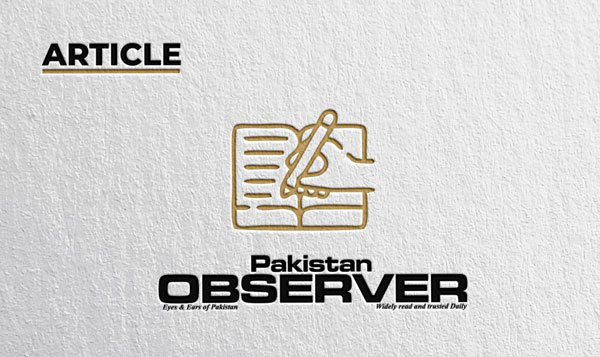PAKISTAN is a water-stressed country and the situation is becoming increasingly troublesome.
It is alarming that half of the world’s population is facing significant water scarcity.
The Water Resource Group reiterated that “the gap between water demand and supply will be 40% by 2030 globally.
” Currently, only 36% of the population has access to safe drinking water.
Given the importance of water and the growing shortage, the United Nations adopted a resolution to celebrate March 22 as World Water Day to emphasize the significance of water and its usage.
The theme for 2025 has been set as “Glacier Preservation,” recognizing that meltwater is a pivotal source of fresh water.
Raising awareness about the importance of freshwater is essential to avert the burgeoning global water crisis and to ensure comprehensive water management.
“Safe water is a basic human right,” said Sanjay Wijesekera, UNICEF Chief for South Asia.
Water scarcity is a dire global issue that demands concerted efforts through the adoption of water preservation policies.
It refers to a shortage of water resources to meet the needs of both the population and the environment while the water crisis occurs when available freshwater within a region is insufficient to meet its living systems’ demands.
Several factors contribute to this ongoing problem, including increasing global warming and climate change, widespread poverty, conflicts and disputes between states, inadequate infrastructure, population explosion, lower-than-usual annual rainfall, rapid urbanization, resource-intensive economic development, contamination of local water supplies, water pollution, overuse of groundwater, poor water management practices, deforestation, hydro-hegemony of certain states, trans-boundary water disputes, unequal water distribution and natural disasters such as droughts and floods.
In Pakistan, the over-reliance on the Indus River system, which accounts for 95.8% of the country’s total renewable water resources, exacerbates the crisis, with 78% of its water resources sourced from outside the country.
The effects of water scarcity are far-reaching, including government regulations on water usage, increased water costs and rising food prices.
Furthermore, Pakistan, being an agrarian country, is heavily dependent on water for agricultural productivity.
It is estimated that Pakistan’s per capita annual water availability will decrease to 274 million acre-feet (MAF) by the end of 2025, while the available resources will remain at 191 MAF.
According to statistics from the IMF, Pakistan has become the third most water-depleted country in the world.
The ongoing water scarcity could have severe geopolitical, geo-economic and ecological consequences.
However, Pakistan does have a significant number of glaciers, which supply the river systems, offering some hope.
According to the Indus River System Authority, Pakistan currently has the capacity to store water for only 30 days.
Pakistan is not immune to the devastating effects of the water crisis.
Alarmingly, the country has transitioned from being water-scarce to water-stressed.
The primary source of water for Pakistan is the Indus River Basin.
It is concerning that annual water availability per capita has fallen to less than 1000 cubic meters, which is below the prescribed threshold.
Furthermore, water is essential for food production and droughts have a devastating impact on crop yields.
Experts have warned that by 2040, water availability in Pakistan could fall to 500 cubic meters per capita per year.
When we examine the distribution of water on Earth, we find that oceans constitute 97% of the water, while only 3% is fresh water.
Of the fresh water, 70% is frozen in ice caps and glaciers, 29% is groundwater (which is pumped for use) and only 1% is accessible as fresh water.
This 1% includes 1% in rivers, 53% in lakes, 38% in soil moisture, 1% in water vapor and 1% in surface water.
Water sources are classified into natural sources (such as ponds, rain, streams, seas, lakes, rivers) and man-made sources (such as reservoirs, canals, tube wells, hand pumps, taps and wells).
Water withdrawal refers to the temporary or permanent removal of fresh water from ground or surface sources, which significantly impacts water scarcity.
The repercussions of water scarcity are manifold, including ecosystem disruption, biodiversity loss and climate change.
There is an urgent need to address the environmental consequences and improve the current situation.
Water pollution costs Pakistan an estimated 3.9% of its GDP annually, leading to health issues and economic losses.
Additionally, social and economic impacts such as health hazards, economic strain and social inequalities, result from poor water management policies.
Water pollutants further hinder the development of a sustainable ecosystem.
To protect the country’s reservoirs and dams, it is crucial to construct the Diamer-Bhasha Dam.
This large-scale dam project would play a vital role in storing floodwater.
Moreover, adopting smart irrigation methods to conserve water and discourage the use of groundwater, especially through tube wells, is essential.
Currently, Pakistan’s only significant dams—Tarbela and Mangla—serve to store rain and floodwater.
However, the United Nations Development Programme (UNDP) and the Pakistan Council of Research in Water Resources (PCRWR) have warned of the risk of absolute water depletion, frequent floods and droughts if remedial measures are not implemented to preserve water.
To overcome the water crisis, there is a need for national consensus, unwavering political will and the resolution of disputes regarding the Kishanganga and Baglihar Dams.
Additionally, the construction of new dams should not be overlooked.
— The writer is a PhD in Political Science from Government College University Faisalabad.
His research focuses on “Post-9/11 Deradicalization and Counter-Violent Extremism in Pakistan. ”(rizwanbh79@gmail.com)










